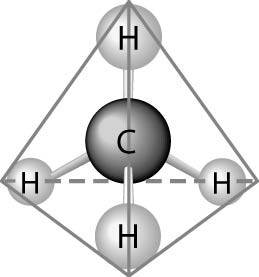By now, you know how important carbon is for our existence. Even our bodies are largely made up of carbon compounds. It is true that it has many harmful effects on our environment, but can’t deny the fact that carbon is indispensable for life on earth. However, the properties of carbon are very interesting to note.
Carbon shows a lot of anomaly in its behaviour. Why does that happen? In this chapter, we will learn all about the same. Let us begin with a brief introduction to carbon.
Suggested Videos
An Introduction to Carbon
We are aware that the amount of carbon present in the earth’s atmosphere and its crust is very less. There is only 0.02 % of carbon in the earth’s crust. This carbon exists as minerals like coal, carbonates and hydrogen carbonates etc. 0.03 % of the carbon exists in the atmosphere of the earth as carbon dioxide.
Well, do not underestimate the importance of carbon based only on its percentage of availability. Carbon is utmost important for our existence and it finds an extensive usage in chemistry. Because of its indisputable importance, chemistry has been divided into two branches:
- Organic Chemistry: This deals with the various compounds containing carbon.
- Inorganic Chemistry: This branch deals with the compounds that do not have any carbon content.
Thus, you must know that carbon is an essential part of every living organism as we are all organic beings!
The Anomalous Behaviour of Carbon
We must remember that most of the first members of a group have peculiar characteristics and properties. On similar grounds, even carbon behaves differently than the other members of the group. The properties of carbon are very unique. We can attribute this behaviour to carbon mainly due to :
- The small size of the atom
- High electronegativity
- High ionization enthalpy
- Unavailability of d-orbital’s
Let us now look at some of these anomalies and their causes in more details.
Unique Properties of Carbon
1) The Small Size of Carbon
Carbon derives a lot of its properties from its small size. The compounds that carbon forms are highly stable and this is also because of its small size. Due to its small size, the nucleus effectively holds on to the bonded and nonbonded electrons.
Hence, in short tetravalency, small size and property of catenation make carbon different from other elements and so we have the whole branch of chemistry dedicated to the study of this kind of compound.
2) Tetravalency of Carbon
Carbon exhibits tetravalency. It means it can share four electrons to complete its octet. Thus, we know it bonds to four different monovalent atoms. Carbon forms a large variety of compounds with oxygen, nitrogen, hydrogen, halogens. This results in a different set of compounds which have distinctive characteristics and properties.
Carbon has the availability of only s and p orbitals. Therefore, it can hold only four pairs of electrons in its valence shell. Thus, we can restrict the covalence to four. However, the other elements in the group can easily grow their covalence due to the availability of d-orbitals.

3) Catenation
One of the unique properties of Carbon is its ability to form long carbon chains. It implies that carbon attaches with other carbon atoms to form long carbon chains. This property is what we call as catenation. Sometimes, this chain could be as big as to have a total of 70-80 carbons. This gives rise to a variety of complex compounds. Some of the compounds have a straight carbon chain while some others have branched carbon chain or even rings.
The carbon compounds having only single bond are the saturated hydrocarbons. On the other hand, the compounds with double or triple bond are the unsaturated hydrocarbons.
As we move down the group, the size of the elements increases. This results in a decreasing electronegativity. Thus, the property to show catenation also decreases. This can be clearly observed from bond enthalpy values. The catenation order is C >> Si > Ge >> Sn.
4) Electronegativity
Additionally, carbon has an extraordinary capacity to shape pp – pp multiple bonds with itself and with different molecules. This can also be related to its smaller size and high electronegativity. Some of the examples would include C = C, C° C, C = O, C = S and C° N.
As a matter of fact, the heavier elements don’t shape pp – pp bonds. This is mainly because of the reason that their nuclear orbitals are too vast and diffused to have viable overlapping. For example, lead does not indicate catenation.
Solved Example for You
Q: Give some practical uses of carbon.
Ans: There are many important uses of carbon. Some of them are:
- We use impure carbon in the form of charcoal (from wood) and coke (from coal) in metal smelting.
- Graphite is a common use in pencils. We also use graphite to make brushes in electric motors and in furnace linings.
- Activated charcoal finds its usage in purification and filtration in respirators and kitchen extractor hoods.
- Industrial diamonds are a common tool for cutting rocks and drilling.






Leave a Reply